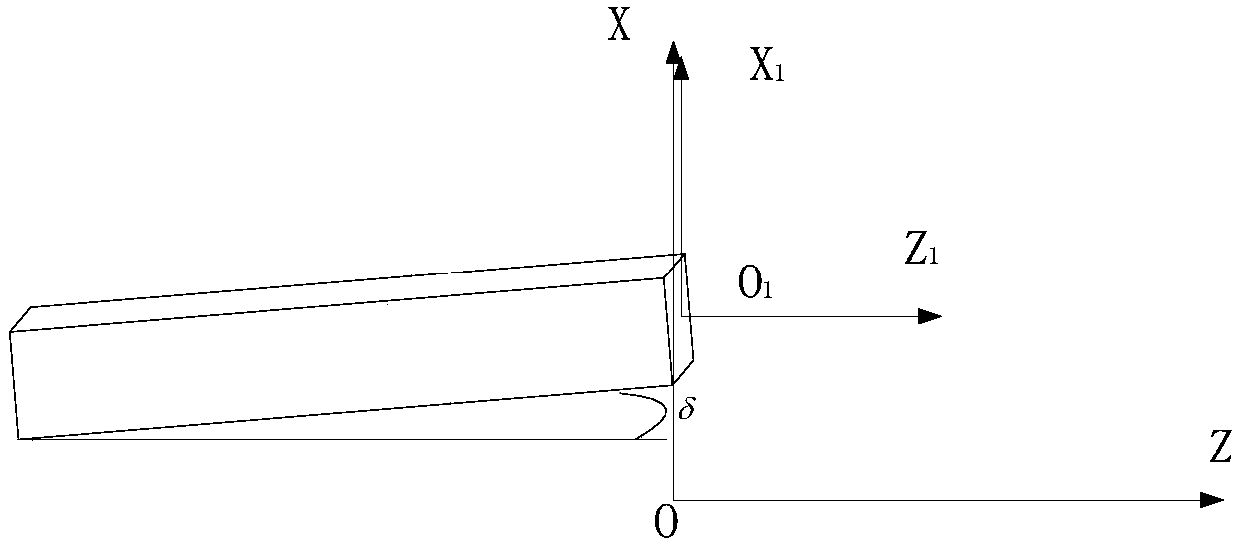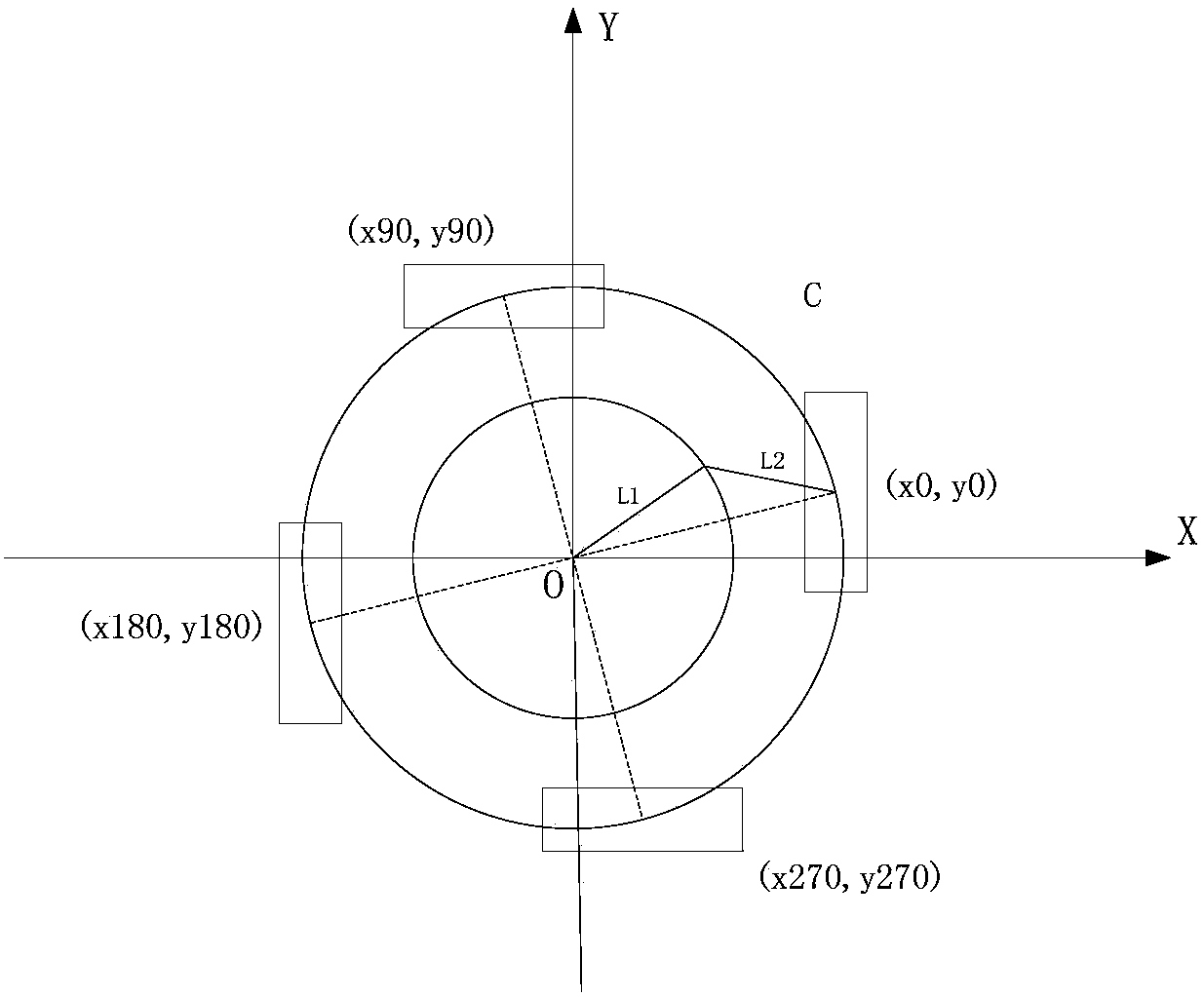A test error correction method caused by the installation accuracy of planar near-field probes
A near-field probe and installation accuracy technology, applied in the direction of measuring devices, measuring electrical variables, instruments, etc., can solve the problems of difficult adjustment, difficult verticality adjustment, etc., and achieve the effect of simple and convenient engineering application and long adjustment time.
- Summary
- Abstract
- Description
- Claims
- Application Information
AI Technical Summary
Problems solved by technology
Method used
Image
Examples
Embodiment Construction
[0026] Such as figure 1 , figure 2 As shown, the coordinate system OXYZ is established, the Z-axis direction is the rotation axis of the probe, and the positive direction of the Z-axis is the outward direction of the probe opening. A method for correcting test errors caused by the installation accuracy of a plane near-field probe includes the following steps:
[0027] (1) Install the antenna to be tested according to the conventional planar near-field test method, and calibrate the site;
[0028] (2) At the initial position of the probe, select a suitable scanning range, generally use a range with a cutoff level less than -35dB, and a suitable test distance, generally choose 3 to 10 wavelengths away from the test antenna face, and perform the first polarization component Data collection to obtain near-field data D 0 ;At this point the probe is at the 0 degree position;
[0029] (3) The probe is rotated 90 degrees clockwise (looking along the positive direction of the Z axi...
PUM
 Login to View More
Login to View More Abstract
Description
Claims
Application Information
 Login to View More
Login to View More - R&D
- Intellectual Property
- Life Sciences
- Materials
- Tech Scout
- Unparalleled Data Quality
- Higher Quality Content
- 60% Fewer Hallucinations
Browse by: Latest US Patents, China's latest patents, Technical Efficacy Thesaurus, Application Domain, Technology Topic, Popular Technical Reports.
© 2025 PatSnap. All rights reserved.Legal|Privacy policy|Modern Slavery Act Transparency Statement|Sitemap|About US| Contact US: help@patsnap.com



